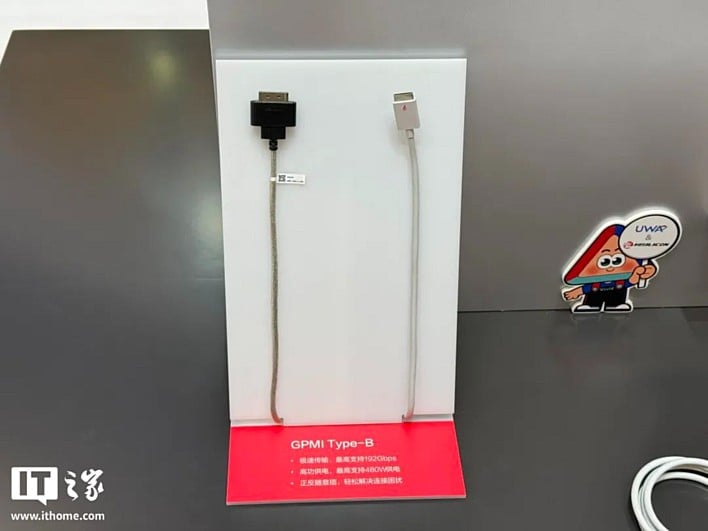China's GPMI Leaves HDMI And DisplayPort In The Dust With 480W Support And Gobs Of Bandwidth
GPMI comes in two flavors, Type-B and Type-C (no direct relation to USB port types). The full-blown 192Gbps Type-B standard uses a proprietary interface somewhat reminiscent of Apple's Lightning connector. The Type-C spec is where the money is, though, thanks to its usage of the ubiquitous USB-C connector. This variant is limited to "only" 96Gbps of bandwidth and 240W power delivery, but even that is plenty to overtake the western protocols. It's worth noting that GPMI's feature list appears to include two-way compatibility with HDMI and DisplayPort both, in a bid to make adding a GPMI device to existing setups relatively painless.

The protocol has been under development since 2019 and promises a future-proof interface capable of handling 8K 120FPS content, power transfer, improved control signaling between A/V devices, and mesh networking capabilities. Interestingly, GPMI reportedly supports two-way transmission, enabling one device to stream to and control many others, among other applications. According to Sina, the protocol's networking skills allow for signals to go over the network to other GPMI-compatible devices, meaning there's no need for every single one of them to be wired with GPMI cables.

The SUCA's 50-strong gang—known affectionately among friends as Shenzhen 8K UHD Video Industry Cooperation Alliance—doesn't appear to mention GPMI's licensing requirements, if any. Although GPMI is presumably a direct competitor to HDMI, it's currently unclear whether it's meant to be a commercial alternative or a full-blown upgrade. Perhaps it's a simple matter of the SUCA members not wanting to pay HDMI's royalties of 4 to 15 cents per device; or the HDMI Forum's technology wasn't moving fast enough for their liking.

